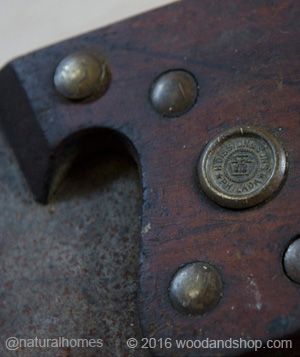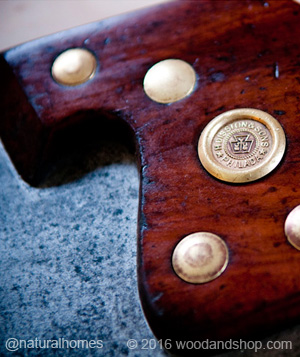| |
|
|
|
The right tools for the job... restoring old tools.
|
|
|
|
|
|
|
|
|
|
|
When setting up for a more self-sufficient and
sustainable lifestyle hand tools are often part of the
equation. Although nowadays we can find all kinds of tools in
all price ranges in most local hardware stores and DIY centres,
for some reason they seem to be struggling to be of any
lasting quality. In an off grid living situation electric
power might not be as readily available and abundant as we
might wish,
making the reliance on hand tools even greater. |
|
|
| |
Old tool are often better quality
that just need some loving care: video above

|
|
|
|
| |
|
|
|
|
|
|
Nothing is more frustrating than getting on with a
job you have been planning for some time only to find the tools
you have gathered are not up to it, blaming yourself for not
shelling out a bit more for quality tools. Collecting the
right tools for the job can be a rather expensive undertaking,
there are however ways to get around this if you take your time
and put in the effort.
|
|
| |
|
|
|
|
|
 |
|
Yard sales, online auctions, swap meets and flea
markets can be a great source when it comes to acquiring the much
needed vintage, quality tools at reasonable prices. Rummaging
through heaps of rusted metal and stained or rotted wood looking
for that hidden gem, picking it up and scraping away rust with
your thumbnail, trying to make out the manufacturer's name is all
part of the hunt.
Restoring old tools
All it takes is some basic chemistry and a little
elbow grease to salvage tools that look like they've been sitting
on the bottom of the ocean since before you were born. Rusty tools
turn up in the shed of the property you just moved into. A friend
hands them down. Often their handles are rotted away and their
steel is so rusty that you consider getting a tetanus shot before
even looking at them.
|
|
 |
|
|
|
|
|
|
|
|
|
To get rid of that neglect all you need is some
white vinegar and some abrasive materials such as:
Steel wool which is available in
eight grades of coarseness ranging from superfine, No. 0000, to
extra-coarse, No. 4.
-
Sandpaper, available various grit sizes
depending on the type of tool you are restoring
Steel wired brush.
To start off your restoration, remove as much rust
as possible using the wire brush, then drop the metal in a bucket
of white vinegar and let it sit overnight. This will further
loosen up the corroded metal. After taking your tool out of the
vinegar rinse it thoroughly with plenty of water and dry it. Now
it is time to get busy with sandpaper and steel wool to clean up
and remove pitting from your tools. When you are satisfied with
their appearance you might want to apply some oils or enamel paint
to protect the tool from getting rusty again. If needed finish of
by installing a new wooden handle, and you have successfully added
a valuable tool to your collection, without breaking the bank. |
|
|
|
|
|
|
|
|
|
|
|
|